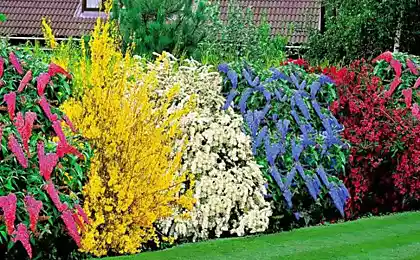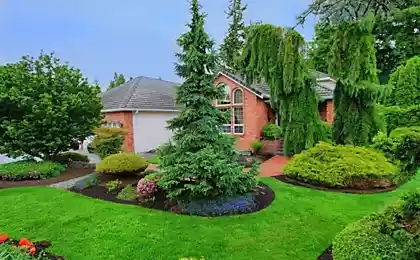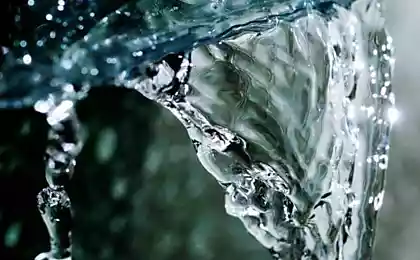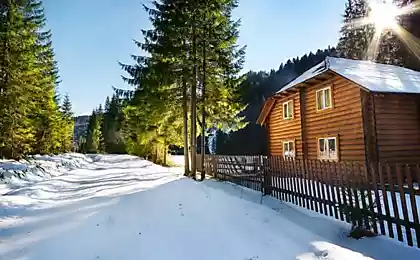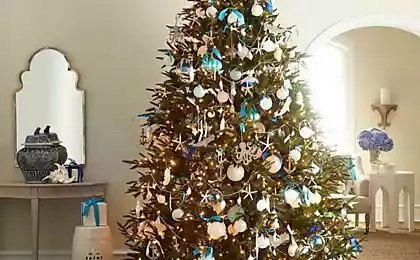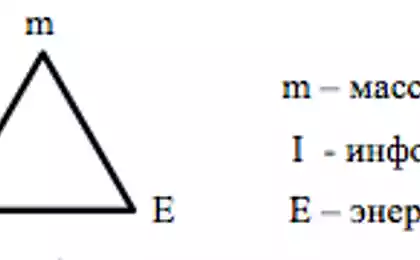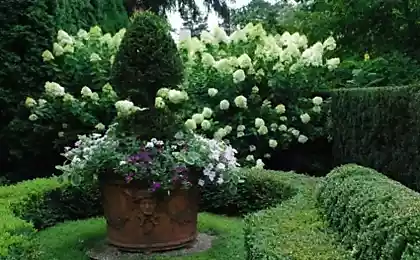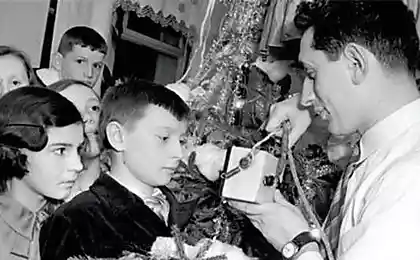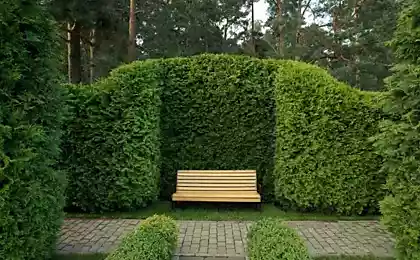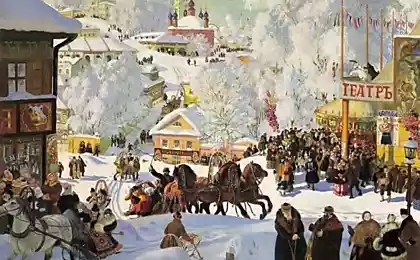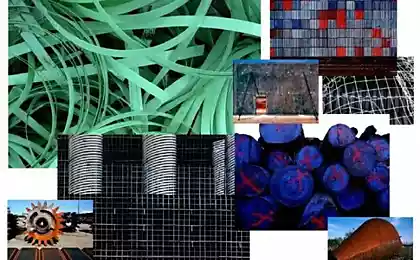581
How to choose a live tree for the New year
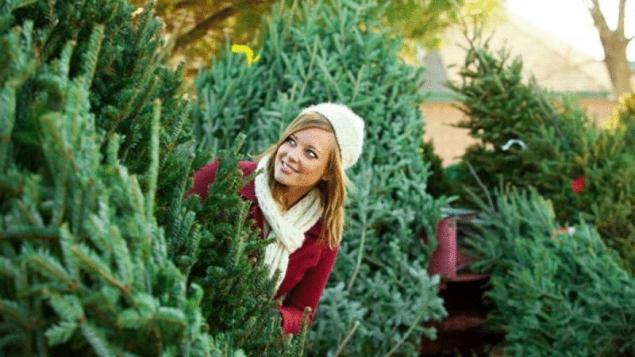
The answers to the classic "pre-Christmas" questions about live trees and other coniferous trees for the holidays from Greenpeace Russia.
How devastating for forests Christmas tradition set home living spruce or other coniferous tree?
The mere use in the New year live pine trees not necessarily associated with any damage to the forest. Until recently, most Christmas trees, at least in densely populated areas of the country, grown on special plantations, often where normal forest can not grow (for example, on the floor under the main power lines, and so should regularly have cleared from overgrown trees and shrubs).
Plantation cultivation of Christmas pine trees may be one of the items of income of forestry and the proceeds going to the protection of forests, maintenance, cleaning of debris, and other useful purposes. Unfortunately, the introduction of the Forest code 2006, the forestry sector is almost extinct, and now a plantation growing Christmas trees almost no one does.
Now somewhere dorobotka latest Christmas trees on the plantations established earlier, and starting next year, specially plantation grown Christmas trees in our country almost no. Remain still a number of Christmas trees are legally harvested without detriment to the forest on the right of way of the linear objects and in similar places, but they are not enough at all.
In the procurement of live Christmas trees harm is caused to nature in case, if they are poaching method, where they can be cut without damage to forest or vegetation impossible. Especially if chopped the best young trees or sparse shrubs (e.g. juniper). In the vicinity of large cities, in densely populated and sparsely wooded areas of the country such cuttings can cause significant forest damage and disrupt the process of natural regeneration.
What environmentally friendly — plastic or live tree?
A definite answer to this question is no. On the one hand, the use of "reusable" plastic Christmas tree is definitely better than buying a living tree, felled in the forest by poachers. On the other hand, the manufacture of plastic trees for nature also not harmless. If we consider all stages of the process, extraction and transportation of hydrocarbons, environmental pollution in the production of materials and parts artificial Christmas trees, it turns out that the cultivation of even ten natural Christmas trees in special plantations doing to the environment significantly less damage than the production of one artificial.
In General if natural fir is the legitimate not of illegal origin, it not worse, than artificial, from the point of view of nature conservation. With proper organization of forestry (which, unfortunately, are not) funds received by the forest management organizations from growing Christmas trees may partially be spent on the protection and maintenance of forests, especially in densely populated areas.
What Christmas trees are legal in origin?
Requirements for growing and harvesting of Christmas trees in recent years has changed several times over the past five years (about as much need for the growing of the Christmas tree on the plantation), they were radically changed four times. Because of this, the legitimate cultivation of Christmas trees across the country now, almost nobody does.
Currently, the legal sources of the Christmas trees four:
a) harvesting of their forest areas, specially leased for temporary or permanent use for harvesting non-timber forest resources (according to the Forest code, trees for the Christmas holidays related specifically to non-timber resources);
b) harvesting in their forests on the basis of contracts of sale in the cases and procedure defined by the law of a constituent entity of the Russian Federation;
C) the special cultivation of trees in nurseries located on land not covered by the new forest legislation (e.g. agricultural lands);
g) import of Christmas trees from countries in which the legislators do not create barriers to legitimate the cultivation of Christmas trees.
There are a number of "semi-legitimate" sources of coniferous trees for Christmas holidays: in the four years of the new Forest code of the Russian forest workers found a variety of loopholes to circumvent his mad requirements.
How to distinguish legally harvested Christmas tree from poaching?
Definitely do it in appearance ate, of course, impossible. Below are almost guaranteed to avoid purchasing poaching products, Christmas tree or other conifer is better to buy only on specially organized markets where sellers of invoices for sold trees, and buyers will be given a receipt (form of receipt in the different cities and regions may be different). Live Christmas trees are sold "with hands" are likely to have illegal origin.
Christmas trees that has an "umbel" or close to it a crown shape in which the length of terminal growth last year does not exceed a few centimeters, with almost a guarantee carved under the forest canopy, and may be of illegal origin (although there are exceptions, mostly in the "mnogoletnih" regions).
Imported Christmas trees, almost all are of plantation origin in countries with normal forestry legislation poaching ate out of the woods just can't compete with the legal price and quality.
What is the "Danish spruce"?
In the last decade in major cities of Russia became widespread so-called "Danish spruce" — imported conifers in individual packaging, most of which is imported, is indeed from Denmark.
Typically, the "Danish spruce" — it does not even spruce and fir, mainly Abies Nordmann or Caucasian. In nature this tree is endemic to the Caucasus (the main part of the area is necessary to Krasnodar Krai of Russia and Georgia). Nordmann fir is one of the largest (reaching a height of over 80 meters) and long-lived (lifespan reaches up to 700-800 years) of trees in Russia. Because of the beautiful needles, dense branches, and fast and uniform growth, the Nordmann fir has long been widely used in landscaping in many European countries, and in recent decades is one of the most popular Christmas trees.
Is it possible, without any permission, to harvest Christmas trees?
In the woods — not. The new Forest code, which came into force from 1 January 2007, allow citizens themselves to harvest a Christmas tree (a specific procedure for harvesting of Christmas trees the citizens should be governed by the laws of constituent entities of the Russian Federation). However, in subsequent years, it was twice amended, which are self-harvesting of Christmas trees, citizens banned. Now citizens can harvest Christmas trees themselves only in exceptional cases, if any, provided by the law of the Russian Federation, on the basis of contracts of purchase and sale. Since the procedure of conclusion of the contract of sale is too complex in some regions have come up with various conditional lawful ways of simplification — for example, a contract with some organization, and a citizen has bought her the right to cut down the Christmas tree.
There are some cases which are not properly regulated by the current legislation (namely, the harvesting of Christmas trees on some categories of land, which the Forest code, or not covered, or not fully covered). However, despite some ambiguities, in General citizens do not have the right to harvest fir and spruce trees for the Christmas holidays on their own.
Can I use instead of the traditional Christmas tree decorative pine trees in pots, tubs or boxes, and is it good for conservation?
Yes, you can. However, to maintain such a tree after the holidays is extremely difficult. For spruce, pine, or other coniferous tree Christmas holidays is a serious heat stress, which they can either dry out or start to rise; their natural period of winter dormancy is broken and to survive the remainder of the winter it is difficult. To keep these trees until the spring is possible, but it's an art, without special knowledge and skills to ensure the conservation of living trees is not easy. Some nurseries grow Christmas trees specially with all these features and make them steps to save until the spring (or take spruce back after the holidays) — this increases the chances of survival of trees. Small spruce sold in small pots in non-specialised retail stores, as a rule, chances of survival have almost no.
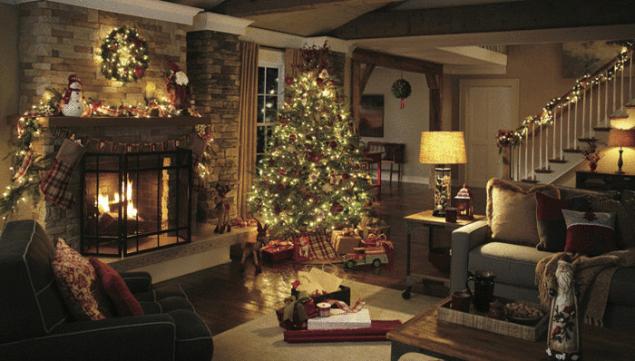
The easiest thing to use as a Christmas tree, those rocks, that can grow indoors throughout the year: cypress, Norfolk pine and other southern trees grown in our climate as plants.
How long does it take to grow a Christmas tree of average size?
It depends on the conditions and technology of cultivation. In Central Russia this process usually takes 6-7 years. Of these two years spent on growing seedlings (usually for laying a "new year" of plantations used the same seedlings, and to restore forest clearings, and burned areas). Thus, not counting the time for the cultivation of seedlings, for getting the Christmas tree takes four to five years. Generally, the South, so the period is smaller than the North — the more. Growing Christmas trees usually requires some lower time than spruce, and fir a few more.
What prevents the authorities of forestry to establish plantations and farming Christmas trees in such quantities to meet the needs of all and to drive out the poachers from the forest?
The main thing that prevents is stupid and ever-changing forest legislation, which is superimposed on the ongoing administrative reform of the forestry authorities. The cycle of growing Christmas trees, along with the time of cultivation of a landing material, is 6-7 years — and few want to invest a lot of money and effort in such work, having no confidence that his organization will not be closed and staff will not be dismissed. Now, few forestry workers can be confident in the future even a year ahead, and in 6-7 years and even more. In addition, none of the forestry workforce can not be sure that they are plantation grown Christmas trees will not be just selected by his organization in the conduct of another "reform."
In addition, we have in the country now there is no forest protection — therefore, plantation of Christmas trees may be destroyed by vandals, arsonists or thieves. And it also does not contribute to the popularity of plantation grown Christmas trees.
Source: greenhunter.ru/blog?id=4356
